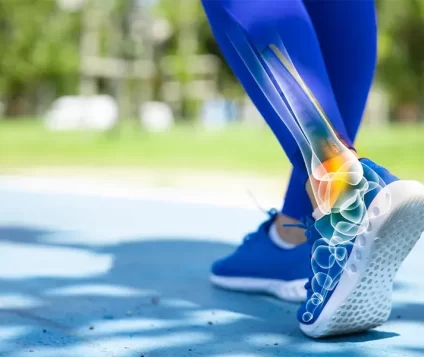How to deal with Trademark Objection?

Having a trademark for your Intellectual Property is extremely important to retain your company’s unique identity. Thus Trademark Registration is a huge and a time consuming process on the path towards brand building. Trademark objection is a step that you cannot really avod in this case. It can get intimidating at times to deal with a trademark objection but with the right legal help and guidance, you can easily get out of this not-so-difficult problem. Trademark Objection isn’t really non-negotiable. You can actually make it work even with a trademark objection if your intellectual property is authentic and definitely original.
What is Trademark Objection?
Trademark objection is one of the primary steps in the Trademark registration process. Trademark objection does not really indicate a straight clear rejection. Instead, after the objection is filed, the trademark registrar asks for a valid reason or explanation about the mark and registration from the one who applies for the trademark. An opportunity is given to the applicant to explain how the trademark in question fulfills all the criteria to deserve a valid registration. Right after receiving a trademark objection, a comprehensive reply needs to be filed within a month from the objection’s date of issuance.There can be various reasons for trademark objections like similarity with an existing trademark, offensive trademarks, absence of uniqueness, etc. These are some of the most common reasons behind trademark objection.
Most common types of reasons for Trademark Objection:
There can be various reasons behind trademark objection but there are mainly two broad categories of trademark objection- that is absolute trademark objection and partial trademark objection.
- Absolute grounds of refusal – refers to the incapability of marks to be distinctive or graphically presented.
- Relative grounds of refusal – are always in connection with earlier trademarks and their related rights.
Reasons for trademark objection:
Misleading Marks:
If any trademark is likely to confuse the people because of something incorporated in the mark ior its use, like nature, quality, or geographical origin of the goods and services. Such applications can receive a trademark objection.
An objection against misleading trademarks can be overcome by filing the form of TM-16.
Lacking a Distinctive Character:
Trademarks that are not capable of making one person’s goods and services stand out from those of another lack distinctiveness and thus can face trademark objection under absolute grounds for refusal of trademarks.
Existence of a similar trademark:
If there are similar or same trademarks of different trademark owners on records in the same or similar category of goods or services, then a trademark objection can be filed.
False or vague specification of goods:
If the description of your goods or services happen to be too vague or worse false; then an objection can be raised as instructed by the trademark registrar:
The specification of goods/services mentioned in respect of class xx is very vague and wide. You should provide exact items in respect of which the trademark is sought to be registered by filing a request on form TM-16.
Incorrect address on trademark application:
In case the trademark applicant has not mentioned the central office of business properly, or he has not mentioned the address from where he operates in India, an objection can be raised as under:
“The Principal Place of business of the applicant should be brought on record by filing a request on form TM-16” or “The applicant’s address for service in India should be brought on record by filing a request on form TM-16, since the applicant has no principal place of business in India.”
Incorrect name of the applicant on the application:
The applicant must fill the name in the application correctly. In case of incorrect name on the trademark application, the examiner would object as follows:
“The application appears to have been filed in the name of a partnership firm, names of all Partners of the firm should be brought on record by filing a request form TM-16.”
Incorrect trademark form:
If the trademark application is not made on a proper form, an objection will be raised by the examiner as follows:
“The application is made on Form TM-1, for certification mark in respect of goods or services falling in a class, the form of the application should be corrected as TM-4 by filing a request on form TM-16.”
Trademark objection report:
- After the trademark registration application is submitted and examined by the trademark officer, an objective report is sent to the trademark applicant if there is any problem. It is also put up on the trademark office website along with details of the trademark application.
- The applicant or the authorized agent then gets a chance to submit a reply to the trademark objection report with a rebuttal if there is an objection by the trademark examiner.
- The response is then considered, and if the objection can be waived off based on the applicant’s response, then the trademark application gets accepted for registration. The trademark gets published in the journal.
Reply to Trademark Examination Report
- The response to an objection in the trademark examination report must be submitted by the applicant or by an agent who the trademark applicant authorizes.
- This reply can be submitted online through the trademark office website or even in person or by post.
- Any affidavit and support documents are also to be submitted along with the reply to the examination report. That can help as evidence in giving some clarity.
FAQs:
Can I rename my IP after trademark objection?
If the applicant is rejected, the applicant has the one last option of appealing to the Intellectual Property Appellate Board (hereinafter referred to as IPAB). An appeal to the IPAB must be filed within three months of the date of issuance of the trademark objection by the registrar.
How do you clear a trademark objection?
If some goods are placed in the wrong class: a trademark reply needs to be sent to the authorities, requesting to change the application to delete the items that do not fall under the proposed class.
If the trademark objection is because of the grounds of lack of distinctiveness then the applicant needs to file a reply stating that the mark can be differentiated from the products and services brand name that it stands for.




















